Ultrafast & Terahertz Photonics Group
|
Ultrafast optical techniques provide powerful probes of different states of matter, using light pulses that have femtosecond duration. In Warwick our activities span a number of areas:
|
Group facilitiesThe Group has labs across the campus, in the main Physics building, Materials and Analytical Sciences, and Millburn House. Read more about our experimental capabilities in terahertz science and technology. We also run the Warwick Centre for Ultrafast Spectroscopy Research Technology Platform. 
We make use of a wide range of Warwick's excellent materials analysis equipment, including X-ray diffraction, Raman spectroscopy, electron microscopy and magnetometry. |
Join the group!We have a funded PhD position available to work on coherent vibrations of defect in diamondLink opens in a new window. PhD positions are available for UK students and potentially for exceptional international students. Please get in touch if you are interested in PhD or MSc by Research topics in the group. We also support postdoctoral researchers to apply for independent fellowship schemes - let us know if that appeals. 
Group, Theses & PhotosContact details for our current group members and our photo gallery. For recent theses from the group, please see here. |
Research areas
Nanomaterials
We use pump/probe spectroscopy to study how light and matter interact on femtosecond to nanosecond timescales. Using visible probes we can track electronic processes, while infrared radiation lets us study vibrational states of molecules and atomic-scale defects in semiconductors.
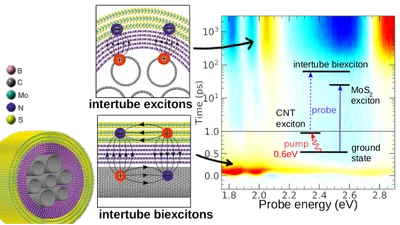
Recent papers:
Terahertz harmonic generation and nonlinear spectroscopy of metamaterial-gated/graphene resonators
Tunable Photoluminescence from Monolayer Molybdenum Disulfide
Terahertz medical imaging
Performing in vivo studies of the THz properties of skin is a major initiative in the group, supported by the EPSRC Terabotics Programme GrantLink opens in a new window. We develop robust measurement protocols and test them on a statistically significant number of patients, cross-checking with other methods.
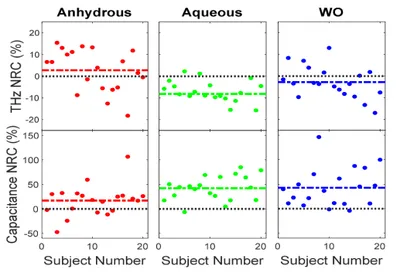
Recent papers:
Robotically Controlled Terahertz Probe for In Vivo Skin Evaluation: Imaging with the PicoBot
Applying Frequency-Wavelet Domain Deconvolution to in Vivo Terahertz Measurements of Skin Conditions
Towards autonomous robotic THz-based in vivo skin sensing: the PicoBot
Semiconductors and Energy materials
A major strand of our research is to improve our knowledge of the fundamental science underpinning new semiconductor materials, such as metal-halide perovskites, which are often attractive for photovoltaic applications.
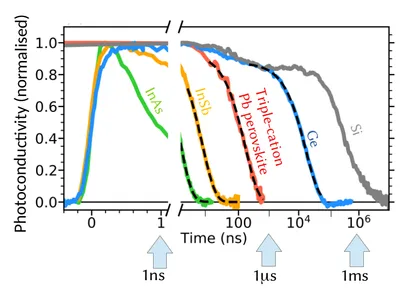
Recent papers:
An Ultrafast Investigation of the Surface and Bulk Passivation Effects of Phenylethylammonium in CH3NH3PbI3 Thin Films
Structural chemistry of the n = 3 Dion–Jacobson phases: controlling polarity and band gap
Distinguishing carrier transport and interfacial recombination at perovskite/transport-layer interfaces using ultrafast spectroscopy and numerical simulation
Terahertz components, methods and techniques
We develop new THz devices and integrate them into novel systems designs that can perform THz imaging and THz spectroscopy faster, and with increased capabilities (e.g. polarisation control; robot-controlled probes).
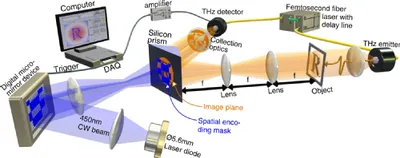
Recent papers:
A Tutorial on THz Pulse Analysis: Accurate Retrieval of Pulse Arrival Times, Spectral Energy Density and Absolute Spectral Phase
Dual-Beam THz Spectrometer with Low-Aberration Optics and Off-Axis Multipixel Photoconductive Emitters for Reduced Systematic Errors
Electrically Tunable Si-Based THz Photomodulator Using Dielectric/Polymer Surface Gating
Recent publication highlights [filter by topic: view all | highlights | THz | perovskites | nano | biomedical]
An Ultrafast Investigation of the Surface and Bulk Passivation Effects of Phenylethylammonium in CH3NH3PbI3 Thin Films

Jake D. Hutchinson, Marcin Giza, Nathaniel P. Gallop, Benjamin Vella, Edward Butler-Caddle, Shaoyang Wang, James Lloyd-Hughes, Pablo Docampo and Rebecca L Milot
Adv. Optical Materials 13 e02011 (Dec 2025)
Hot-Phonon-Induced Distortion of Diamond Defects on Ultrafast Timescales ("Editors' Suggestion")
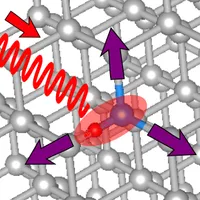
T.J. Keat, J. Zhao, J.M. Woolley, P. Malakar, G.M. Greetham, X. Wu, J.P. Goss, R.J. Cruddace, C.B. Hartland, M.W. Dale, V.G. Stavros, M.E. Newton and J. Lloyd-Hughes,
Phys. Rev. Lett. 135 216902 (Nov 2025)
Robotically Controlled Terahertz Probe for In Vivo Skin Evaluation: Imaging with the PicoBot

J.J. Young, A. Agarwal, B.G. Page, A. Dogra, A.I. Hernandez-Serrano, J. Hardwicke and E. Pickwell-MacPherson
J. IR mm THz waves 46, 36 (May 2025)
A Tutorial on THz Pulse Analysis: Accurate Retrieval of Pulse Arrival Times, Spectral Energy Density and Absolute Spectral Phase

J. Lloyd-Hughes, N. Chopra, J. Deveikis, R. Pandya and J. Woolley
J. Infrared mm THz 46 34 (May 2025)

